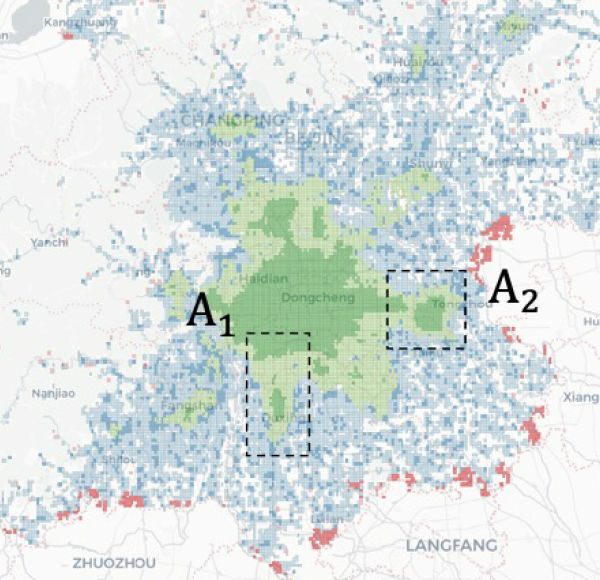xiu2022mobility
Mobility Census for the analysis of rapid urban development
Gezhi Xiu, Jianying Wang, Thilo Gross, Mei-Po Kwan, Xia Peng and Yu Liu
arXiv:2212.05487
Traditionally urban structure and development are monitored using infrequent high-quality datasets such as censuses. However, human culture is accelerating and aggregating, leading to ever-larger cities and an increased pace of urban development. Our modern interconnected world also provides us with new data sources that can be leveraged in the study of cities. However, these often noisy and unstructured sources of big data pose new challenges. Here we propose a method to extract meaningful explanatory variables and classifications from such data. Using movement data from Beijing, which is produced as a byproduct of mobile communication, we show that meaningful features can be extracted, revealing for example the emergence and absorption of subcenters. In the future this method will allow the analysis of urban dynamics at a high spatial resolution (here, 500m) and near real-time frequency.

Figure 1: The mobility census approach allows high-resolution (500m scale) near-real-time analysis of the social structure of cities based on mobility data that is produced as a by-product of mobile communication. We use this approach in a longitudinal comparison of Beijing in in 2018 and 2021, using one month of data from each year. This reveals the different layers of the city and shows the maturation of new subcenters as well as the absorbion of other subcenters into the city center.